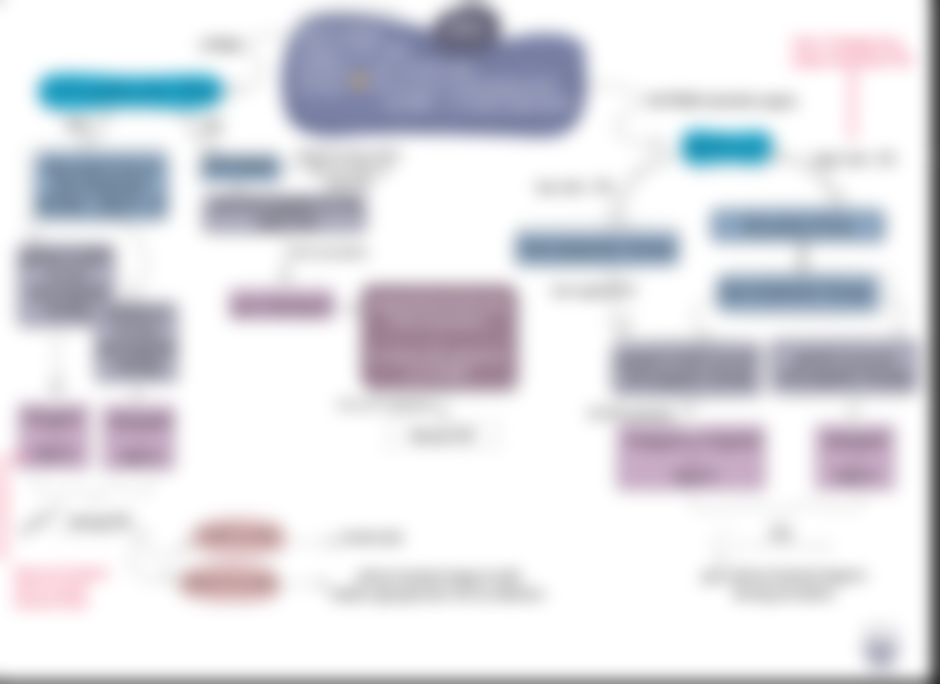Definition:
Acute coronary syndrome (ACS) is a spectrum of clinical presentations resulting from reduced blood flow to the myocardium, including unstable angina, non-ST-segment elevation myocardial infarction (NSTEMI), and ST-segment elevation myocardial infarction (STEMI).
Pathophysiology:
- ACS is predominantly caused by rupture or erosion of an atherosclerotic plaque in a coronary artery, leading to partial or complete occlusion of the vessel.
- Plaque rupture or erosion triggers platelet activation and the formation of a thrombus, further reducing blood flow to the myocardium and causing myocardial ischemia or infarction.
Epidemiology:
- ACS is a leading cause of morbidity and mortality worldwide.
- Men have a higher risk of developing ACS than women, and the risk increases with age.
Clinical Presentation:
- Chest pain: Typically described as central, heavy, crushing, or tight pain that may radiate to the arms, neck, jaw, or back.
- Associated symptoms: Dyspnea, diaphoresis, nausea, vomiting, dizziness, or syncope.
- Atypical presentations: More common in women, older adults, and individuals with diabetes.
Risk Factors
| Modifiable |
Non-modifiable |
| Smoking |
Age (>45 men, >55 women) |
| Hypertension |
Family history of premature IHD |
| Diabetes |
Male sex |
| Dyslipidaemia |
Ethnicity (South Asian higher risk) |
| Obesity / inactivity |
— |
💡 Smoking cessation has one of the most significant impacts on long-term outcomes post-ACS.
Investigations:
- ECG: Performed immediately to identify ST-segment elevation, depression, or T-wave inversion
- Cardiac biomarkers: Serial troponin measurements (at presentation and 3 hours later)
- Additional tests: Full blood count, renal function tests, electrolytes, glucose, and lipid profile
- Imaging: Echocardiogram to assess left ventricular function
- Invasive coronary angiography: To identify coronary artery disease and guide revascularisation strategies
| ECG Changes |
Coronary Artery |
| Anterior |
V1-V4 → Left Anterior Descending |
| Inferior |
II, III, aVF → Right Coronary |
| Lateral |
I, V5-6 → Left |
Anterior STEMI:
.png) Inferior STEMI:
Inferior STEMI:
.png) Lateral STEMI:
Lateral STEMI:
.jpg)
Management Principles
STEMI:
-
Requires urgent reperfusion, ideally via primary PCI within 120 minutes
-
If PCI not available promptly, fibrinolysis may be considered (if within 12 hours of symptom onset)
NSTEMI / UA:
-
Risk stratify with GRACE score
-
High-risk patients benefit from early coronary angiography (within 24–72 hours)
-
Antiplatelet and anticoagulant therapy should be tailored based on PCI plans and bleeding risk
🚨 Full dose regimens, drug selections (e.g. ticagrelor vs clopidogrel), and invasive vs conservative strategy timing are covered in the full note.
Anticoagulant use in ACS


ACS algorithm:

Want more? Unlock the full chapter inside Medifries
This is only a partial version. The full Medifries ACS textbook chapter includes:
-
📈 Drug doses and exact timings for PCI and fibrinolysis
-
📊 Risk stratification with GRACE and Killip class breakdown
-
💊 Full tables on antiplatelet and anticoagulant use, complications, and secondary prevention
.png)
.png)
.jpg)


